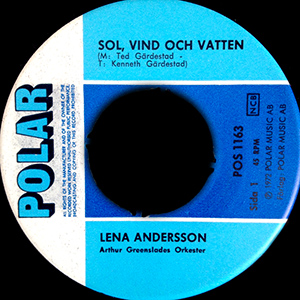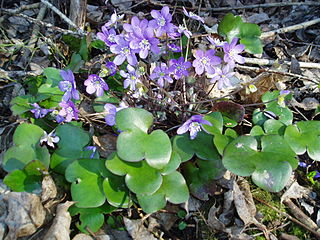Related Research Articles
"Vaggssång till Jesus", "Somna nu lilla barn" or "Vaggsång för en liten timmerman" is a 1971 Swedish Christmas song, with lyrics by Britt G. Hallqvist and music by Bertil Hallin. The song was originally published in the 1971 songbook "Det visste inte kejsarn om" at Verbum Förlag AB. The compilation consists of 20 songs talking about people and incidents in the New Testament about the life of Jesus. The songs were recorded by Ulla Neuman, and the record was released in Denmark, Norway and Sweden. The song has also been published in Barnens svenska sångbok (1999), Nya barnpsalmboken (2001) and circa 20 other songbooks.
"När det lider mot jul", also known as "Det strålar en stjärna", is a Swedish Christmas song with lyrics by Jeanna Oterdahl, and written for vocals and piano in 1909 by Ruben Liljefors. A version for mixed choir, a cappella, was added in 1933 and originally published in 1944 by Gehrmans musikförlag. The song’s later popularity is said to have been affected by publication in Gottfrid Berg’s Läroverkskören 1950 and after being recorded on record, it was heard in TV in the early 1960s.
Tomtarnas julnatt, also known as Midnatt råder or Tipp tapp, is a Christmas song with lyrics by Alfred Smedberg, and music by Vilhelm Sefve-Svensson. The song was originally published in the children’s magazine Jultomten in 1898, and has then been re-published several times. In 1916 it was published in 115 sånger för de små., According to song researcher Lennart Kjellgren the crediting of Sefve for the music is uncertain (1999).

Raska fötter springa tripp, tripp, tripp or just Raska fötter, is a Christmas song, originally published in Julklappen in 1901. The song, originally entitled Liten julvisa, describes a time when on several places in Sweden, the Christmas goat was still the Christmas giftbringer, and not Santa Claus. Sigrid Sköldberg-Pettersson (1870–1941) wrote lyrics while Emmy Köhler (1858–1925) wrote music.
"Bereden väg för Herran" or "Bered en väg för Herran" is a Christian hymn with lyrics by Frans Michael Franzén in 1812. Britt G. Hallqvist later rewrote the final verse lyrics. Describing Jesus coming into Jerusalem, it is a popular Advent song.
Hosianna, Davids son is an Advent song with music by Abbé Vogler for mixed choir and church organ, with lyrics in Swedish-language. It's one of the more popular Advent songs in Sweden.
Var hälsad, sköna morgonstund is an 1819 Christmas hymn with lyrics by Johan Olof Wallin. It is set to a tune composed by Philipp Nicolai., There is also an English language-version called "All Hail to Thee, O Blessèd Morn!" with lyrics by Ernst W. Olson published in the Augustana Hymnal of 1901.
Tryggare kan ingen vara is a Christian hymn with lyrics by Lina Sandell circa 1850, and published in 1855 Andeliga daggdroppar, where the writer was credited as anonymous. It was recorded by Carola Häggkvist in 1998 on the album "Blott en dag". It has also been used in the film soundtrack for the 1987 film "More About the Children of Noisy Village".
"Vi sätter oss i ringen" is a well-known Swedish Christian children's hymn with 1969 lyrics by Margareta Melin and 1970 music by Lars Åke Lundberg. Written for Kyrkans barntimmar, the song received major coverage throughout Sweden in the 1970s, with the album Vi sätter oss i ringen. Ilon Wikland also drew a poster with children from different parts of Earth.

Sol, vind och vatten is a song written by Swedish lyricist Kenneth Gärdestad and composer Ted Gärdestad. First recorded by Lena Andersson, the song was released as a single in October 1972. Ted Gärdestad recorded the song for his 1973 album Ted.
"Hej tomtegubbar" is a Swedish drinking song, also used as a children's round dance at Christmastime.
Julpolska, also known as Nu ha vi ljus här i vårt hus, is a Christmas song with lyrics by Rafael Hertzberg (1845-1896) and music by Johanna Ölander (1827-1909). Song lyrics describe Christmas Eve, dated from a time when the Christmas goat at many places still was the giftbringer, not Santa Claus.
"Ett barn är fött på denna dag" is a Swedish Christmas song.
Karusellen, also known as Jungfru skär or Jungfru skön, is a song often used as a singing game when dancing around the Christmas tree and the midsummer pole. The lyrics are centered on a carousel. The song was recorded at the Nääs sloy teacher's seminary around. When Sånglekar från Nääs by Otto Hellgren and Rurik Holm published in 1905 and 1915, the song was in the second volume. The song was also used as theme song for the Sveriges Radio programme Karusellen back in the early 1950s.
Tomten och haren, or I ett hus vid skogens slut, is a song often used as a Christmas song, but also used as a mimic song. The song is often sung among children, and the lyrics deal with a Santa Claus/elf/tomte figure sitting inside a cottage noticing a hare, saving it from the hunter by allowing it into safety inside the cottage. The tune is of unknown origin, but is reminiscent of the Sunday school song Är du glad av hjärtat nöjd, and the Evert Taube song Flickan i Havanna.
"Hej, sa Petronella" is a song with lyrics by Lennart Hellsing and music by Knut Brodin, and published in 1957 in Våra visor I. The song deals with fictional person Petronella from Plaskeby, and the theme is trying to be happy in all conditions and weather. Creating a boat out of items is a common theme in many fairy tales. The melody is based on a folk tune.
Vattenvisan is a children's song with lyrics by Lennart Hellsing and Lille Bror Söderlundh, and published in 1960 in Våra visor 3. The song was written for the school radio programme Bara vanligt vatten in 1957, and originally had seven verses. During publication, two of them were removed.
Lillebror is a children's song wit lyrics and music by Gullan Bornemark, published in Hallå, hallå in 1964. Compared to the original version, the lyrics have been changed a little bit later. The inspiration to the lyrics game from the Gullan's daughter's Eva's baby brother Sven, who thought he could do anything.
Visan om solen, månen och planeterna is a poem written by Betty Ehrenborg-Posse, published in 1868 in Folkskolans läsebok. As a song it is, just like the Anthem of Europe, sung to the same tune as Beethoven's 9th symphony. The lyrics teach geography, astronomy and the four Northern Hemisphere temperate seasons. Nowadays, often just the closing verse is sung, named Månaderna, Januari börjar året, Månadsvisa or Visan om året.

Blåsippor, also known after the opening words Blåsippan ute i backarna står, is a children's springtime song with lyrics written by Anna Maria Roos. It was originally published as a poem in Lilla Elnas sagor in 1894. It was set to music by Alice Tegnér and published as a song in 1895 in volume 3 of "Sjung med oss, mamma!"
References
- ↑ "Adventstid" (in Swedish). Svenskt visarkiv. 1972. Retrieved 9 October 2014.
- ↑ "Kattarp-Välinge sjunger 1958-1959". Svensk mediedatabas. 1979. Retrieved 18 May 2011.
- Palm Anders, Stenström Johan, ed. (1999). Barnens svenska sångbok. Bonnier.
| This 1970s song-related article is a stub. You can help Wikipedia by expanding it. |
